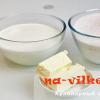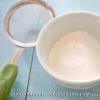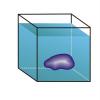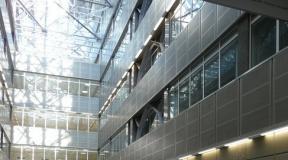How to increase the seat for a bearing. Three methods for restoring a bearing seat. Electric motor bearing seat
It happens that the bearing in the crankcase has turned, its seat in the engine block or in the crankcase of some unit (gearbox or rear axle) becomes loose, and it is impossible to operate a car or motorcycle with such a malfunction, since the bearing seat will break even more. Such a malfunction can occur from repeated or incorrect installation of the bearing into the hole (socket) of the crankcase, lack of lubrication (the bearing jams and it turns), or simply from imprecise manufacturing of the bearing hole. And this type of malfunction is often encountered by owners of any vehicle, or just some kind of machine or unit. How to easily get rid of such a malfunction at home, without having galvanic equipment, even the simplest (for zinc coating), we will consider in this article.
Of course, you can increase the diameter of the outer race of the bearing if you cover it with chromium or a layer of zinc, and I already wrote about this (you can read it here). But for this you will need to make special plugs (so that the coating layer does not get on the balls, separator and internal surfaces clips), and you’ll have to tinker with chemicals.
In this same article, we will look at another, even simpler way to increase the outer diameter of the holder, which can be done both in your garage and in field conditions any person, even a schoolboy.
First, let's look at the more common ones traditional methods restoring a broken seat hole in a bearing, maybe some of the newbies don’t know about them and they will be useful to someone. And after that, we’ll look at a rarer method that most repairmen don’t know about.
1 — crankcase, 2 — bushing, 3 — outer race of the bearing.
So, if a bearing is mounted in the crankcase of some kind of unit or its cover, and the mounting hole is broken, then the cover is secured through a faceplate in a lathe, and the crankcase in a carding boring machine, and the diameter of the mounting hole is bored by about 3 - 4 mm and after To do this, press a repair bushing into the bored area, in which the inner diameter is slightly larger (with an allowance for finishing) and after backfilling, bore the inner diameter of the bushing to match the diameter of the outer race of the bearing (see Figure 1).
This method is quite common, despite the fact that many craftsmen have to look for cardinate boring or lathe and also make a device for accurately securing the part. In addition, this method will not be suitable if the thickness of the metal of the housing wall becomes thin after boring and does not provide sufficient rigidity to the bearing bore. And this stops many people, and you can’t find a competent machine operator everywhere.
Some “masters” try to get by simply by punching the seating surface, but one can hardly hope that such a “repair” will last for a long time, usually a couple of hours. After all, with this method the bearing race will not lie on the entire surface of the mounting hole, but only on tiny areas (pimples) that have a tiny area. Yes, and the sealed areas quickly become crumpled during installation of the bearing (especially in a soft aluminum crankcase), and the bearing race again begins to dangle and rotate.
The most accessible and effective ways repair, this is when the enlarged bearing hole is not touched at all, but only increases the thickness of the bearing race. And there are also several ways here, this is metal spraying with special installations, which are still very little widespread, this is chrome coating of the holder, and zinc coating of the holder, which is more accessible at home, which I already wrote about (link above in the text).
But there is another little-known, but very simple way to increase the size of any round metal part, and in in this case bearing races, which is not difficult to do at home, in the garage and even while traveling (on the side of the road). Moreover, no special qualifications or any secret skill is required, and any driver who is able to open the hood of his car will cope with this simple operation quite easily, especially if an assistant helps.
The principle of metal extension with this in a simple way, is based on the operating principle of resistance welding. And for work we only need a couple of springs, for example from Moskvich or Volga, a couple of pieces of thick wire (cables with an alligator clip are suitable for “lighting up”) and a well-charged battery, or welding transformer(a powerful starting charger may also work).
1 - battery, 2 - springs, 3 - bearing, 4 - table with stands.
And in order to increase the diameter of the outer race of the bearing, this bearing will need to be rolled between two springs, connecting to the springs electricity(see Figure 3). And as I already said, springs from our domestic cars are suitable, but if the bearing is much larger, for example from a truck, then the width of the springs needs to be chosen wider, from the same truck (you can find old springs at scrap metal collection points, or in car dealerships) .
The length of the springs also depends on the diameter of the bearing, but as a rule, the length of one spring is about a meter, and the second can be cut to half a meter (this will make it more convenient to work). We connect each spring with a cable to the pole pieces of the battery or transformer, ensuring good contact.
You can use terminals from the car to tightly connect the cables to the battery, and you can clamp the cables to the springs using bolts and washers, or powerful alligator clips (such as welding ones). Moreover, the polarity when connecting the springs can be any.
a - overlay thickness 0.1 mm, b - overlay thickness 0.25 mm, c - overlay thickness 0.5 mm.
Rolling is performed several times, and at the same time the surface of the outer race is gradually covered with a large number of small welded tubercles from the metal of the springs (see photo on the left). And it is enough to do a few rollings, and the surface of the outer race of the bearing is already increased to such a diameter that the race will no longer dangle in its broken hole.
It is useful to wear rubber gloves on the ends of the upper spring and tape them with tape, or simply wrap them with electrical tape. This will avoid short circuit springs and damage to the battery if, during rolling, the upper spring touches the lower spring with its end.
This often happens if the diameter of the bearing being restored is small. And if the bearing has a very small diameter, then it is useful when working on the contrary to turn the upper spring with the deflection upward.
When working with a battery, in order not to damage it, it is useful not to protect the rust on the springs at all, since rust has additional resistance that will prevent an excessive increase in current. But if you wish, you can also connect a rheostat, which can be used to accurately select the right strength current
If a welding transformer is used instead of a battery, then of course it is better to use one with current regulation. Welding current set in the range of 100 - 150 amperes, and the higher the current, the faster the metal will grow, but the larger the deposited particles will be.
Therefore, it is useful to choose a middle ground so that the particles of the deposited metal (inclusions) are not large, and you don’t have to fuss for a long time. You can practice on a bad bearing first. But as a rule, for a normal increase in the diameter of a 110 mm bearing by 0.5 mm, a current of 150 amperes and about five minutes of knurling will be required. And at the same time, the bearing heats up to only 100 degrees, which means the structure of its metal does not change.
 After knurling, as can be seen in the photographs, the surface of the holder has a somewhat rough appearance, which is even better, since it will never turn in its hole again (the adhesion of a rough surface is better than a smooth one). But still, if someone wants to restore the surface of the outer race in this way to the factory smooth state, then it is quite possible to make the coating twice as thick (instead of 0.5 mm, make 1 mm). And after that, give the bearing to a turner, who will polish the race until smooth, removing about 0.5 mm from the surface.
After knurling, as can be seen in the photographs, the surface of the holder has a somewhat rough appearance, which is even better, since it will never turn in its hole again (the adhesion of a rough surface is better than a smooth one). But still, if someone wants to restore the surface of the outer race in this way to the factory smooth state, then it is quite possible to make the coating twice as thick (instead of 0.5 mm, make 1 mm). And after that, give the bearing to a turner, who will polish the race until smooth, removing about 0.5 mm from the surface.
Using the method described in this article, the seating of bearings that had turned in their places was restored not only passenger cars both motorcycles, but also trucks, and quite a lot of money was saved, since the crankcase or rear, hub, or engine block no longer needed to be changed, which is what I wish for you; Good luck everyone.
The article describes the technology for restoring a bearing seat using Chester Molecular composites.
At gaps up to 0.25 mm: Chester Molecular anaerobic adhesives are used to prevent bearing rotation.
To restore a seat broken by more than 1 mm in diameter, materials are used for: Chester Metall Super, Chester Metall Super SL, Chester Metall Super Fe, Chester Metall Rapid And Chester Metal Special
Figure 1. Seat wear
#1 Recovery Technology

Recovery Technology No. 2
This technology Designed to restore bearing seats in the housing.Selection of composite material
The repair composite material should be selected based on the repair conditions:
- for urgent repairs - Chester Metall Rapid E [Chester Metall Rapid E]
- For normal repairs - hester Metall Super [Chester Metal Super]
- for special or complex repairs - Chester Metall Super SL [Chester Metall Super SL] With for a long time polymerization
Repair technology
 Preparing the surface of the conductor
Preparing the surface of the conductor To form the bearing seat, it is necessary to use a jig (bushing) having the required outer diameter and its tolerance. If possible, make the surface of the conductor with less roughness (grind or polish). Risks, scuffs, and potholes are unacceptable on the surface of the conductor. The prepared surface of the conductor, which will form the surface of the bearing seat, must be treated with Chester Release Agent to prevent adhesive contact polymer material with the surface of the conductor. The release liquid is applied in two layers. Rice. The first layer is thoroughly rubbed in, the second is applied generously. The conductor can be detachable (Fig. 4), consisting of two halves, but in this case it is necessary to have expansion devices that press the conductor to the worn surface.

Rice. 4 Installation of the conductor
The bearing itself, the surface of which is also treated with a separating liquid, can be used as a conductor.
Application of material and installation of the conductor
- Prepare the polymer material in accordance with the company's instructions.
- Apply thin layer onto the prepared surface and thoroughly rub it into the micro-irregularities of the surface.
- Apply a layer of polymer material in a thickness that ensures full contact of the material with the surface of the jig, while a small amount of polymer material should be applied to the wear center
- Install the conductor into the housing (Fig. 4) with the applied metal polymer so that it forms the surface, squeezing out excess material, which should be removed with a staple. To ensure alignment, you can use a jig mount threaded connections to the side surfaces of the body or along other cylindrical surfaces.
- After finishing the preliminary polymerization of the material, the conductor should be removed.
Recovery Technology No. 3
The repair composite material should be selected based on the repair conditions (See repair technology No. 2)
Preparatory operations
 Preparing the bearing seat in the housing
Preparing the bearing seat in the housing
Clear mechanically damaged seat from grease and rust. Mechanical processing can be carried out with a burr. After mechanical treatment, the worn surface should have a roughness of Ra 20 -40
Surface degreasing
After the mechanical preparation operation, the surfaces should be cleaned and degreased with a proprietary cleaner. Chester F7 [Chester F7]. Degreasing the surface is done with a clean rag, generously moistened with cleaner. Washing should be repeated several times. The cleanliness of the surface is controlled by a clean white rag moistened with a cleaner - no traces should remain on the white cloth
Installation of the centering device. Applying material and installing the bearing on the jig
Applying material and installing the bearing on the jig
- Sand the outer ring of the bearing with sandpaper (grit No. 400).
- Clean and degrease the bearing surface with cleaner Chester F7 [Chester F7]
- Apply release agent Chester Release Agent onto the bearing surface and rub it into the bearing surface with a rag. Reapply the release agent Fig. 6 Installing the device liquid on the bearing surface
- Prepare the polymer material in accordance with the company's instructions
- Apply polymer material to the machined outer ring of the bearing
- Apply a thin layer of polymer material onto the prepared surface of the technological hole and thoroughly rub it into the micro-irregularities of the surface
- Apply a layer of polymer material in a thickness that ensures close contact of the material with the bearing surface, with a small amount of polymer material applied to the wear center.
- Install the bearing on the fixture in the housing with the applied metal polymer (Figure 4) so that it forms a surface, squeezing out excess material, which should be removed with a spatula
- After preliminary polymerization is completed and the material has gained strength to allow mechanical processing (according to the proprietary instructions), the centering device is removed and the unit is completely assembled.
Seats often cannot be repaired, and then the question arises of replacing the part associated with the bearing and which has lost the nominal parameters of the seat. This type of repair is not economically feasible. The solution in this situation is repair using Dimet technology.
Let's look at examples of repairing seats using the cold gas-dynamic spraying method.
Motorcycle hub bearing seat.
The defect of the seat is that the outer ring of the bearing rotates during operation, which puts additional loads on the axis of the inner ring and on the bearing itself.

Image 1. Seat for the outer bearing race on a cross-country motorcycle wheel.
To eliminate this problem, it is necessary to add a layer of metal to the inner diameter of the hub. The hub is made of aluminum alloy. Before applying the composition, we pre-treat the surface with abrasive composition K-00-04-16. The application of an additional layer is carried out in the third mode of the Dimet-405 apparatus. Spraying is carried out with a reserve. The final processing of the coating is carried out at low cutter feed at high speeds.


Image 2. Stages of repair (a - aluminum layer applied with a reserve, b - final version ready seat)
Crankshaft half ring seat
The seat of the remote semi-ring of the crankshaft of the cast-iron Mercedes-Benz cylinder block was repaired using Dimet technology. Final processing was produced with a special cutter.


Wheel bearing seat
Repair of the Ford cast iron hub seat was carried out by applying an aluminum layer 0.3 mm in size. These manipulations provided the necessary tension in the connection.


Image 1. Stages of repair (a – initial, b – final)
Electric motor bearing seat
Repair of bearing seats in the electric motor housing was carried out using an aluminum composition device, spraying mode - “3”. The images show the stages of repair.
Landings
The Importance of Proper Fit
If a rolling bearing with an inner ring is only mounted on the shaft with an interference fit, dangerous annular slip may occur between the inner ring and the shaft. This sliding of the inner ring, called "slip", causes the ring to move hoop-wise relative to the shaft if the interference fit is not tight enough. When slippage occurs, the fitting surfaces become rough, causing wear and significant damage to the shaft. Abnormal heating and vibration may also occur due to abrasive metal particles penetrating the bearing.
It is important to prevent slippage by securely fastening with sufficient tension the ring that rotates, either to the shaft or in the housing. Slippage cannot always be eliminated by axial tightening through the outer surface of the bearing race. however, as a rule, there is no need to provide tension on rings subjected only to static loads. The fit is sometimes made without any interference on both the inner and outer rings to accommodate certain operating conditions or to facilitate installation and disassembly. In this case, lubrication or other applicable methods should be considered to prevent damage to the fitting surfaces due to slippage.
Loading and landing conditions
| Load application | Bearing operation | Load Conditions | Landing | ||
| Inner ring | Outer ring | Inner ring | Outer ring | ||
| Rotational | Static | Rotational load on inner ring, static load on outer ring | Interference fit | Loose Fit | |
 |
Static | Rotational | |||
 |
Static | Rotational | Rotational load on outer ring, static load on inner ring | Loose Fit | Interference fit |
 |
Rotational | Static | |||
| Load direction is not determined due to direction change or unbalanced load | Rotational or static | Rotational or static | Interference fit | Interference fit | |
Fit between radial bearings and housing bores
| Load Conditions | Examples | Tolerances for housing openings | Axial displacement of outer ring | Notes | ||
| One-piece housings | Large bearing loads in a thin-walled housing or heavy shock loads | Car wheel hubs (roller bearings), crane, impellers | P7 | Impossible | - | |
| Car wheel hubs (ball bearings), vibration screens | N7 | |||||
| Light or fluctuating loads | Conveyor rollers, rope pulleys, tension pulleys | M7 | ||||
| Load direction not defined | Heavy shock loads | Traction motors | ||||
| One-piece or detachable housings | Normal or heavy loads | Pumps, crankshafts, main bearings, medium and large engines | K7 | Usually not possible | If axial displacement of the outer ring is not required | |
| Normal or light loads | JS7 (J7) | Maybe | Axial displacement of the outer ring is required | |||
| Loads of all types | General bearing applications, railway axle boxes | H7 | Easily possible | - | ||
| Normal or high loads | Housing bearings | H8 | ||||
| Significant rise in temperature of the inner ring in the shaft | Paper dryers | G7 | ||||
| One-piece housings | Precise performance under normal or light loads desired | Grinding spindle rear ball bearings, high speed centrifugal compressor pivot bearings | JS6 (J6) | Maybe | For larger loads, a tighter fit than K is used. When required high accuracy, very tight tolerances must be used for fitment | |
| Load direction not defined | Front ball bearings of the grinding spindle, stationary bearings (supports) of the high-speed centrifugal compressor | K6 | Usually not possible | |||
| Accurate operation and high rigidity under fluctuating loads are desired. | Cylindrical Roller Bearings for Metal Cutting Machine Spindle | M6 or N6 | Impossible | |||
| Minimum noise level required | Appliances | H6 | Easily possible | - | ||
Notes on the table:
- This table applies to cast iron and steel housings. For cases made of light alloys, the fit should be tighter than in this table.
- Not applicable for special landings.
Fitments between radial bearings and shafts
| Load Conditions | Examples | Shaft diameter, mm | Shaft tolerance | Notes | |||
| Ball bearings | Cylindrical and tapered roller bearings | Spherical Roller Bearings | |||||
| RADIAL BEARINGS WITH CYLINDRICAL HOLES | |||||||
| Slight axial displacement of the inner ring on the shaft is desirable | Wheels on static axles | All shaft diameters | g6 | Use g5 and h5 where precision is required. In case of large bearings, f6 can be used for light axial movement | |||
| Slight axial displacement of the inner ring on the shaft is not required | Tension pulleys, rope pulleys | h6 | |||||
| Rotational load on the inner ring or undefined load direction | Electrical Appliances, pumps, fans, vehicles, precision machines, metal cutting machines | <18 | - | - | js5 | - | |
| 18-100 | <40 | - | js6 (j6) | ||||
| 100-200 | 40-140 | - | k6 | ||||
| - | 140-200 | - | m6 | ||||
| Normal loads | General bearing applications, medium and large motors, turbines, pumps, engine main bearings, gearboxes, woodworking machines | <18 | - | - | js5 (j5-6) | k5 and m6 can be used for single row tapered roller bearings and single row angular contact bearings instead of k5 and m5 | |
| 18-100 | <40 | <40 | k5-6 | ||||
| 100-140 | 40-100 | 40-65 | m5-6 | ||||
| 140-200 | 100-140 | 65-100 | m6 | ||||
| 200-280 | 140-200 | 100-140 | n6 | ||||
| - | 200-400 | 140-280 | p6 | ||||
| - | - | 280-500 | r6 | ||||
| - | - | over 500 | r7 | ||||
| High loads or shock loads | Railway axle bushings, industrial vehicles, traction motors, structures, equipment, crushing plants | - | 50-140 | 50-100 | n6 | The bearing internal clearance must be greater than CN | |
| - | 140-200 | 100-140 | p6 | ||||
| - | over 200 | 140-200 | r6 | ||||
| - | - | 200-500 | r7 | ||||
| Axial loads only | All shaft diameters | js6 (j6) | - | ||||
| RADIAL BEARINGS WITH TAPERED HOLES AND BUSHES | |||||||
| All types of loads | General bearing applications, railway axle boxes | All shaft diameters | H9/IT5 | IT5 and IT7 mean that the deviation of the shaft from its true geometric shape, such as round or cylindrical, must be within tolerances IT5 and IT7 respectively | |||
| Transmission shafts, spindles of woodworking equipment | H10/IT7 | ||||||
Note: This table applies to solid steel shafts only.
I think many have seen the unconscious cries of “Yes, these hubs are rubbish, the bearings will soon be hanging out in them!” Such school nonsense is heard every day and constantly, with or without reason.
So, we will talk about the seats of the wheel bearings and why the seats sag.
The first reason, independent of the owner, is the original quality of the materials from which the hub is made.
For example, let's take CNC hubs and a regular standard hub for budget pit bikes for comparison.

The second reason - mixed - is wheel bearings. It is mixed in the sense that it depends both on the quality of the installed bearings and on the laziness of the owner to monitor their condition.

If you install cheap bearings, they will either quickly fall apart and begin to beat, or even when new they will have a runout that is unacceptable for use in principle. Naturally, all the impacts will be transmitted to the hub, and any metal will be deformed by the impact, so that’s the subsidence.
Well, the owner is to blame in two cases: installing cheap bearings and untimely replacement of the bearing, it’s simple.
The third reason is an overtightened drive chain. It puts a large load on one side of the wheel, and accordingly, uneven distribution of loads leads to beating, accelerated wear, impacts - and that’s it, the landing sag.
BUT ALL THIS IS NOTHING compared to the main reason - HANDMADE!)))
There is simply a realm of engineering idiocy here.
So, the first chapter is knocking out bearings with a screwdriver and a sledgehammer on a cold one! This is exactly what every schoolchild loves. After he does this, microns of metal are removed by a bearing coming out crookedly, but this is nonsense. They also don’t hit in a circle, knocking out the bearing evenly, but instead hit at one point. In this case, the bearing rests on one side, sinks the hubs, and even removes the necessary microns with its edge!
Let's say some people think that heating the metal is not necessary, and that an anchor puller is enough. Even so, the bearing will at least move evenly, but it will be tight, and microns will still be eaten away, and this is not good. But why do you need pullers and hair dryers? There is a screwdriver and a sledgehammer!
But in fact, if you want the bearing seats and the hub as a whole to serve you happily ever after, then remember:
1) Monitor the chain tension
2) Monitor the condition of the bearings!
3) Timely replacement of bearings
4) Use of quality bearings
5) When replacing bearings, use a hair dryer AT A MINIMUM! And it's best that you have an anchor puller.



















